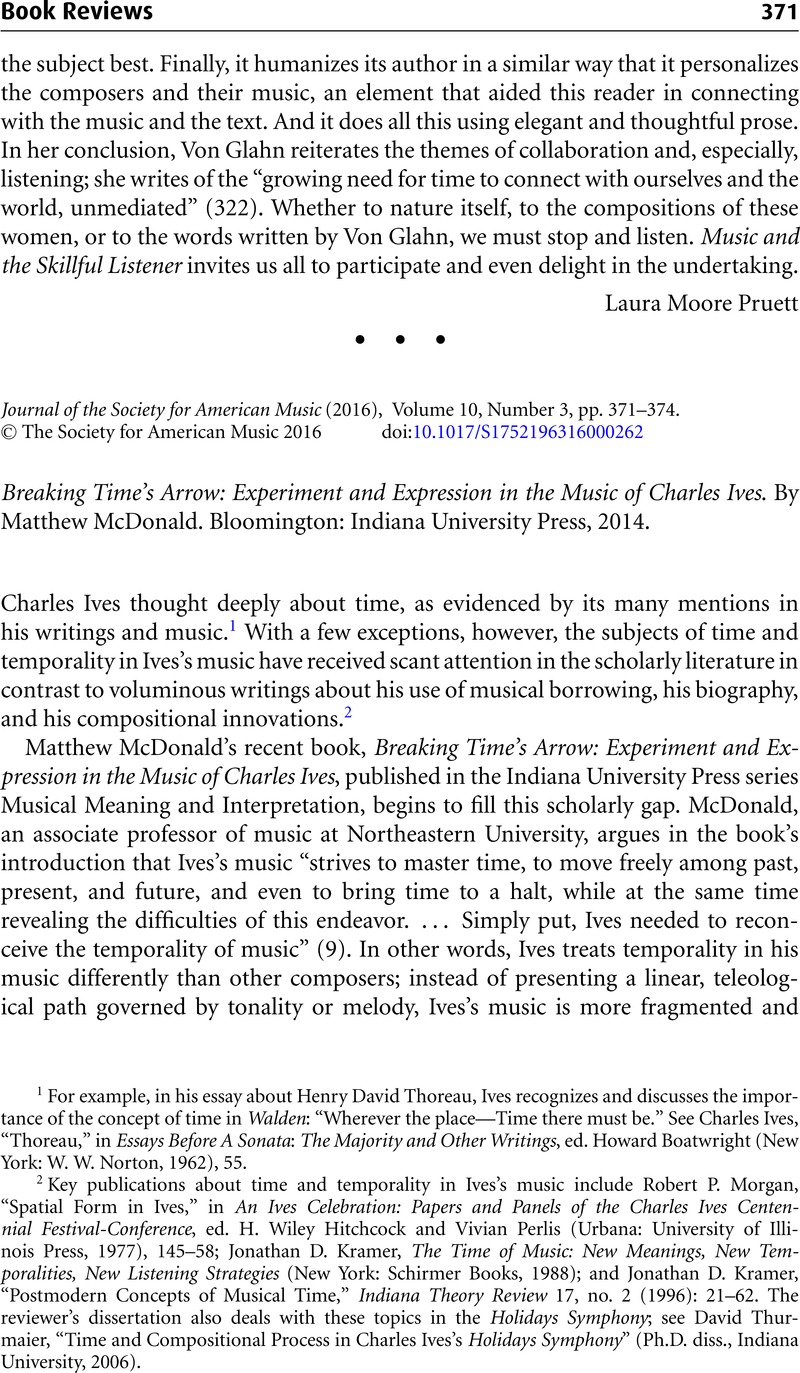No CrossRef data available.
Article contents
Breaking Time's Arrow: Experiment and Expression in the Music of Charles Ives. By Matthew McDonald . Bloomington: Indiana University Press, 2014.
Published online by Cambridge University Press: 30 August 2016
Abstract

- Type
- Book Review
- Information
- Copyright
- Copyright © The Society for American Music 2016
References
1 For example, in his essay about Henry David Thoreau, Ives recognizes and discusses the importance of the concept of time in Walden: “Wherever the place—Time there must be.” See Ives, Charles, “Thoreau,” in Essays Before A Sonata: The Majority and Other Writings, ed. Boatwright, Howard (New York: W. W. Norton, 1962), 55 Google Scholar.
2 Key publications about time and temporality in Ives's music include Morgan, Robert P., “Spatial Form in Ives,” in An Ives Celebration: Papers and Panels of the Charles Ives Centennial Festival-Conference, ed. Hitchcock, H. Wiley and Perlis, Vivian (Urbana: University of Illinois Press, 1977), 145–58Google Scholar; Kramer, Jonathan D., The Time of Music: New Meanings, New Temporalities, New Listening Strategies (New York: Schirmer Books, 1988)Google Scholar; and Kramer, Jonathan D., “Postmodern Concepts of Musical Time,” Indiana Theory Review 17, no. 2 (1996): 21–62 Google Scholar. The reviewer's dissertation also deals with these topics in the Holidays Symphony; see Thurmaier, David, “Time and Compositional Process in Charles Ives's Holidays Symphony” (Ph.D. diss., Indiana University, 2006)Google Scholar.
3 For example, no such attribution to Wagner is found in Sinclair's, James B. authoritative Descriptive Catalogue of the Music of Charles Ives (New Haven, CT: Yale University Press, 1999), 447 Google Scholar; or in Henderson, Clayton, The Charles Ives Tunebook (Bloomington: Indiana University Press, 2008)Google Scholar.
4 See McDonald, Matthew, “Silent Narration? Elements of Narrative in Ives's The Unanswered Question ,” 19th-Century Music 27, no. 3 (2004): 263–86CrossRefGoogle Scholar; and Matthew McDonald, “Ives and the Now,” in Music and Narrative since 1900, ed. Klein, Michael L. and Reyland, Nicholas (Bloomington: Indiana University Press, 2013), 285–307 Google Scholar.
5 For Ives's explanations of what he calls “substance” and “manner,” see Essays Before a Sonata, 75–82.


